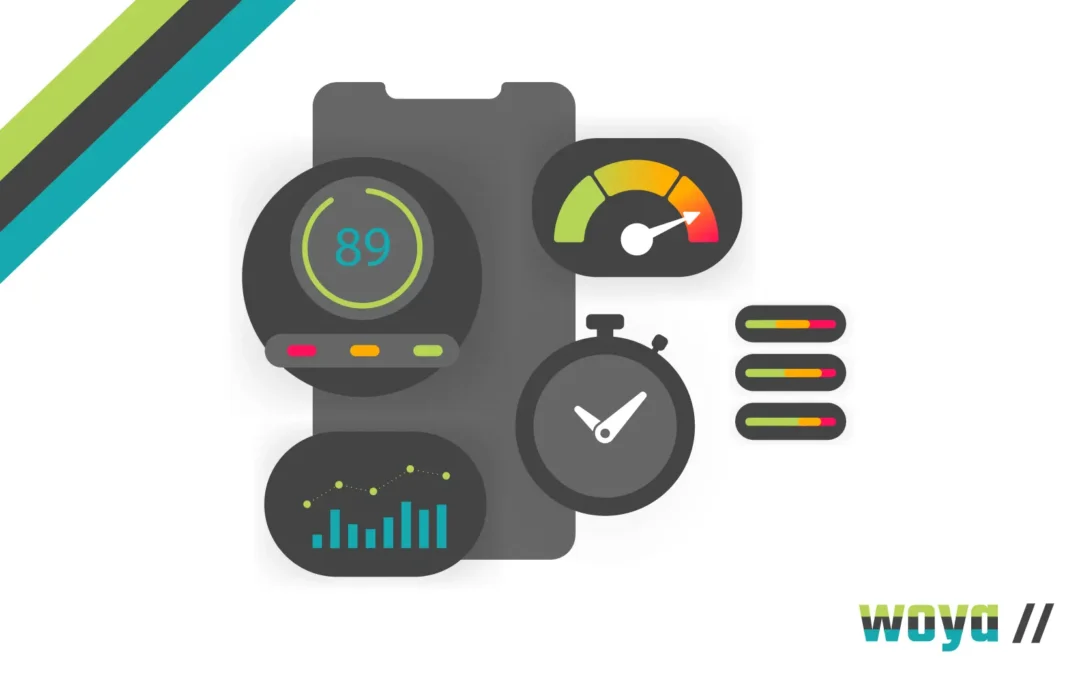
Technical SEO for Finance Websites
Reading Time: 5 minutesDid you know that the average load speed of top-ranking Google pages is 1.65 seconds? It can’t be a coincidence that this is around a second slower than average speed across the internet, with those snappy sites constantly scooping up the best spots on the SERPs.
It all boils down to technical SEO, the unsung hero of digital marketing that’s constantly working away behind the scenes. It’s not flashy, it has no frills, but it does do a lot of the heavy lifting in terms of your website rank.
To learn more about technical SEO for finance websites, we’ve put together this guide to provide an understandable overview of what the technical SEO element is all about.
What Is Technical SEO?
Technical SEO involves improving the foundations and functionality of your finance website. Through a range of different technical strategies, we make it simpler for search engines to find, understand, and rank your website. In turn, you’ll see your site moving up through the ranks, landing those coveted top spots that get around 55% of all clicks (28.5% of which go to the first result).
A lot of technical SEO focuses on back-end development (the coding side of your site). Some of the core components include:
- Site speed
- Mobile optimisation
- Site architecture
- Indexing
This a coding-heavy strategy that tends to be more complex than keyword optimisation or writing meta descriptions (both of which are important for on-page SEO). You need an intricate knowledge of how websites are built and improved, making it a job for our SEO experts at Woya Digital.
Why Do We Conduct Technical SEO?
Technical SEO for finance websites is an essential, heavy-duty part of any SEO strategy that takes a lot of time and knowledge.
Improving Site Performance
Techniques like optimising site speed, improving responsiveness (how a website adjusts to different devices), and creating secure connections all improve the performance of your website.
By implementing technical SEO, websites become snappier and more user-centric. Think of it like polishing your digital presence until it sparkles, which reflects wonderfully on your brand image and improves the way in which your website fulfils its purpose.
Our finance SEO services will also uncover faults in your site. Little errors can impact your site performance, and by fixing them we create a more seamless experience for a site (and business) that’s taken seriously.
Enhancing User Experience (UX)
Those wonderful site performance benefits we’ve just mentioned also have a direct impact on the user experience. By improving performance, we also improve the useability of your platform from the customer’s perspective, making it easier and more enjoyable to navigate
It’s well-known, for example, that over half of users will abandon a website that takes more than 3 seconds to load (and it can be even less when browsing on smaller devices). The fact, therefore, that technical SEO improves load speeds makes it more likely that your visitors will be happy to stick around.
Search Engine Crawling and Indexing
Technical SEO techniques improve the crawlability of your site. This refers to the method search engines use to analyse different web pages, ‘crawling’ them for information in order to index and rank the pages. The better your technical SEO, the easier it is for your web pages to be crawled and understood by Google, and the higher they’re likely to rank.
We implement a number of different clever tactics to make your website easier to crawl. For example, we might do a cleanup of your site structure and create a clear, logical sitemap to submit to Google. We also use internal linking to better map out your website, ensuring that none of your content is missed when the search engines come crawling.
Boosting Search Ranking
As with all of our finance SEO services, the desired result of technical SEO is to help your website rank higher in the SERPs and provide an improved user experience *(UX).
Each method we utilise is known to influence rank, and with our experience of financial SEO services, we can put a tailored spin on your strategy for the best results.
Benefits of Technical SEO for Finance Websites
We’ve taken a look at some of the main reasons we carry out technical finance SEO, but these are just the tip of the iceberg. Let’s hone in on some more of the specific benefits you can expect:
- Better mobile experience: We focus on responsive design when carrying out technical SEO. This ensures that your website instantly adapts to different devices, including smartphones and tablets, without losing any functionality. All of your features will be in the correct place and your website will work seamlessly to cater to all of your leads, no matter how they browse.
- Better search engine visibility: By improving your technical SEO, we make sure your web pages are clearly visible to search engines. This ensures that all of your keyword-rich blogs and locally optimised content are indexed quickly, adding countless SEO points to your website and boosting visibility.
- Enhanced website security: Google wants to present results to its users that they can trust, which is why it favours sites with solid security in place. As part of our finance SEO services, we use SSL certificates, firewalls, HTTPS, and other security measures to keep your users and your data safe.
- No duplicate content: Duplicate content is a big no-no. Search engines penalise or at best, ‘ignore’ pages or websites that use duplicate content. This includes content published on other websites and on different pages throughout your website. As part of our technical SEO for finance businesses, we’ll check that your site contains original content only to avoid search engine penalties.
- Easier navigation: Technical SEO creates better-functioning websites, including in terms of navigation. By creating logical site structures and navigation breadcrumbs, exploring your site becomes intuitive for users and potential leads can find the information they need to convert with ease.
- Reduce bounce rates: By improving site speed and navigation, you should see a reduction in your bounce rate. This is the percentage of users who leave your site without having clicked on another page. A high bounce rate indicates to search engines that your website isn’t fulfilling user needs, which can trigger a decline in your rank. A low bounce rate has the opposite effect, improving your SERP position and boosting conversions.
A Quick Look at Our Technical Finance SEO Services
At Woya Digital, we offer comprehensive finance SEO services for businesses looking to increase their online visibility. Drive high-quality leads to your website and boost conversions with our SEO experts.
To give you a quick overview of what to expect when working with us, here are the steps in our SEO Marketing Success Strategy:
- Discovery and strategy – we start every technical SEO project by sitting down for a chat with your business to identify goals. We’ll then create a detailed strategy that aligns your requirements with an evidence-based approach to boost your rank.
- Technical SEO analysis and audits – we’ll carry out an audit of your website to highlight the areas that need to be improved, pinpoint opportunities for quick SEO gains, and identify issues to fix.
- Implementing technical SEO techniques – after analysing your site, we’ll begin the complex technical SEO strategies to improve the back end of your website. This can include improving your load speeds, removing duplicate content, and creating index-friendly sitemaps.
- Analytics and reports: to ensure our technical SEO is doing what it should, we’ll constantly monitor analytics to gain insights into your rank position, bounce rate, lead generation and more. We provide you a monthly SEO report to show you how things are progressing.
- An agile process: we put insights and metrics to good use, using data to direct the future of your technical SEO campaign and constantly streamline our processes to bring the best results to your business.
Technical SEO is an ongoing process, so the work doesn’t stop here! We’ll continue improving your website performance and indexing new content constantly.
Taking the Next Steps in Technical SEO
Technical SEO is complex and should be carried out and managed by a SEO experts who know what they are doing.
That’s where we come in. With our experienced team on your side, you don’t have to worry about load speeds, internal links, and sitemaps because we’ve got it all covered. Sit back, relax, and watch your site skyrocket towards the top of the SERPs with our technical SEO for finance businesses.
Ready to move forward? Get in touch with our team at Woya Digital and let’s give your finance business a well-deserved boost.


